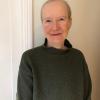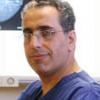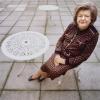It is completely understandable that you will be worried about the possibility of cancer if you have found a lump in your breast, but remember; most breast lumps are not cancer. The most likely cause for a lump depends on your age.
Guide to Finding a Lump in the Breast;
- Introduction most breast lumps are not cancer
- What you need to do if you find a lump in your breast
- The triple assessment to accurately asses the nature of a breast lump
- Diagnosing from the triple assessment
- Types of benign breast lumps
- Breast cancer treatments
Introduction to Diagnosing the Cause of Breast Lumps
It is completely understandable that you might worry about the possibility of breast cancer if you find a lump, but remember; most lumps are not cancer. The most likely cause for a lump depends on your age.
In women aged from 20 to 30 years a definite lump is most likely to be a fibroadenoma. These are benign lumps that can sometimes be painful or enlarge but they are not cancerous and do not turn cancerous.
Between the age of 40 and 50 years breast cysts become more common. These are also entirely benign. They are collections of fluid within the breast and although they can also be painful they are not dangerous.
From the age of 30 years onwards the gland tissue in the breast changes and it becomes more fibrous and nodular. The way the breast feels has been described as like a scaled down packet of frozen peas and occasionally, in just the same way that frozen peas can stick together to form a clump, so breast tissue can “stick together” to form a definite nodular area. These areas are also often tender but once again are not a sign of cancer.
The rate of breast cancer begins to rise after the age of 40 years and increases with age. Of course, breast cancer can occur at any age and I have seen cases in women as young as 19 years and in their early 20s, but they are very, very rare.
The important message is, if you notice a change in your breast please get it checked. Let’s go through what you need to do.
What you need to do if you find a lump in your breast
The first thing to do is to see your GP and explain what you have noticed. They will examine you and in some cases may suggest a further check at a different time of your menstrual cycle. Some of the nodular areas can change with the cycle and this is actually a reassuring sign. If a discrete nodular area persists or your GP finds a definite lump, or is unsure, they will refer you to a breast clinic for a full assessment by the breast team. The team should consist of several consultants working together, and will include a specialist breast surgeon a radiologist and a pathologist.
The triple assessment - for testing breast lumps
The investigation of any breast problem revolves around what is called the triple assessment. It is like doing a jigsaw puzzle; pieces (of information) are collected and put together until the whole picture (the diagnosis) becomes clear. Indeed, this is often termed “the diagnostic jigsaw”. In some cases only 2 pieces may be needed, in others 4, but 3 (the triple assessment) is most common. Let’s have a look at what the pieces are.
Part 1
The first specialist you meet will often be the breast surgeon. They will ask questions about your symptoms (called taking your “history”). They will also ask about previous medical problems and your family history. They will then examine both breasts. How the breast feels when it is examined is the first part of the jigsaw.
Part 2
If there is a definite area of change then a fine needle aspiration may be carried out. This test uses a normal sized syringe and needle. The needle is placed into the area of the breast and “jiggled” so that a small amount of material is sucked into the syringe. This is sent away to be looked at under the microscope. More commonly now a test known as a core biopsy is done. A core biopsy takes a core of breast tissue about 1.5 cm long and 2 mm in diameter. The core biopsy is carried out by first putting some local anaesthetic into the skin of the breast. Once this has worked (it is quite quick) a small nick is made in the skin to allow the core biopsy needle, attached to the biopsy “gun”, to be placed into the breast. When the “gun” is “fired” (it is painless, but does make a noise rather like a large stapler) the needle takes the sample. This is often repeated a few times. The appearance of the cells that have been removed with a fine needle aspiration, or the result of the core biopsy, is the second part of the jigsaw.
Part 3
The final part of the triple assessment involves taking images of the breast. In women less than 35 years an ultrasound scan is the most common way of doing this. Women over 35 years will have a mammogram as well. Full field digital mammograms are the most sensitive type available at the moment. What an area of the breast looks like on a mammogram or an ultrasound scan is the third piece of the jigsaw.
Diagnosing from the triple assessment
If the triple assessment produces the same answer at each stage the result is said to be concordant and no further tests may be needed. For example, a lump in a 30 year old woman may feel like a fibroadenoma, look like one on an ultrasound scan and a core biopsy shows pieces of a fibroadenoma.
However, what if the pieces don’t quite fit and the picture (diagnosis) is not initially obvious (the triple assessment is then said to be discordant)? For example, in a 50 year old woman a lump may feel like a benign nodular area but look odd on an ultrasound with a normal mammogram. In this case another piece of the jigsaw may be needed, such as an MRI scan or occasionally an operation to remove an area for full examination under the microscope.
An important part of the triple assessment that is not commonly mentioned is to watch how things change (or not) with time. It would not be unusual to check things a few months later, repeating some, or all, of the assessment to make sure nothing has changed. A thorough triple assessment may actually be a quadruple assessment!
Once again it should be emphasised that in the majority of cases a triple assessment (or a quadruple one) will reveal that cancer is not present. Most symptoms are age related changes or benign lumps. However, it is important that any new change is thoroughly investigated by a specialist to make absolutely sure that all is well.
Benign Breast Lumps:
- Fibroadenomas
- Breast cysts
- Breast abscesses
- Phyllodes tumours
- Lumps in the breast caused by fatty tissue
- Breast lumps in men
- Lumps in the breast that do need to be removed
Breast Cancer Treatments:
- Introduction to treating breast cancer
- Tailoring treatment for breast cancer
- Surgery for breast cancer
- Reducing the risk of the breast cancer recurring
- Has the cancer spread?
- Laboratory analysis following surgery for breast cancer
- Radiotherapy treatment for breast cancer
- Endocrine treatment for breast cancer
- Chemotherapy for breast cancer
- Molecular treatments for breast cancer
- Pre-operative chemotherapy for breast cancer
- The “next big thing” for breast cancer treatment








